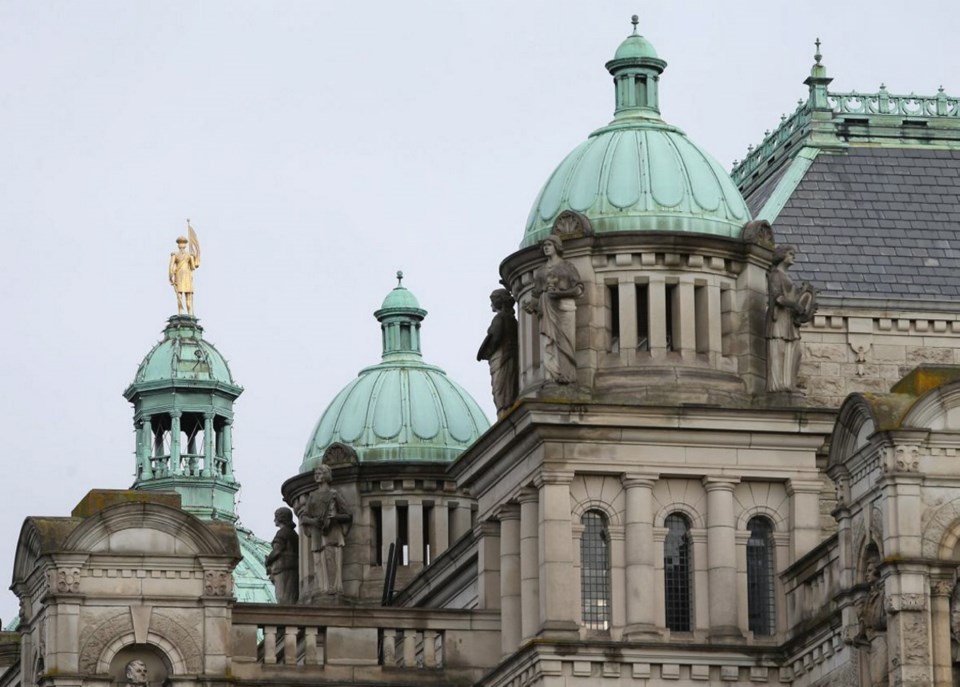 The legislature committee conducting hearings on next year’s budget got a brief overview from Finance Minister Carole James on Monday of where all the money is going.
The legislature committee conducting hearings on next year’s budget got a brief overview from Finance Minister Carole James on Monday of where all the money is going.
Then they flew to Dawson Creek and heard about where a lot of it might be coming from.
It’s the fabled Montney formation gas field under northern B.C., a.k.a. the field of dreams.
The vast deposits include natural gas in volumes that are hard to imagine.
The name stems from a hamlet where a well in the 1960s produced the first hint of what was to come. The scope has been re-defined many times since then, and each time the estimates have gotten bigger, to the point where it’s considered one of the biggest gas fields in North America, if not the world.
Addressing the all-party committee that is starting hearings on how to spend $50 billion in provincial money next year, Dawson Creek Mayor Dale Bumstead said: “Where’s the money coming from for you guys for health, education, social programs? It’s coming from this resource sector. It’s coming from this resource development.”
Bumstead and other Peace River mayors have been promoting the importance of the resource for years. His pitch this week came just days after Premier John Horgan said B.C. is “very, very close” to a deal that would take natural gas development to another level.
That’s the $40-billion LNG Canada project for a big export terminal at Kitimat, using a gas line from the north.
Echoing the word from the premier, Bumstead said: “I know the previous government had worked hard in getting this across the line. We are very close, and this is a huge opportunity.”
The measures he used bring home the size. He said if LNG Canada and two other major plants moved forward, the Montney has enough gas to last 100 years. “For us as a region, a province, a country, to be able to provide that clean energy to the world. … How amazing would that be?”
Excitement over natural gas has faded over the years as the price slumped. The existing industry, based entirely on supplying the U.S., brings in a fraction of the provincial revenue it did 10 or more years ago.
Green Party Leader Andrew Weaver has repeatedly assured everyone that the economics don’t work, and B.C. has “given away the farm” in failed attempts to make it work.
But the NDP government succumbed this year to the same dream the B.C. Liberals nurtured for years and embraced LNG.
That sets up a potential NDP-Green clash that could break the confidence agreement that created the NDP government. The picture will become clearer once the government explains how an emission-heavy LNG industry fits into a climate action plan currently under development that is aimed at drastically reducing those emissions.
One clue was provided by another LNG advocate who appeared before the committee.
Byng Giraud represents the Woodfibre LNG plant, being built near Squamish. It’s a fraction of the size of the majors under discussion on the north coast.
What makes it “special,” he said, is electricity. The plant site at the end of Howe Sound has easy access to B.C. Hydro lines, so it will run on electricity, not gas, which reduces emissions by 80 per cent and “makes us the lowest-emitting LNG facility in the world.”
That’s the same target Horgan was aiming for in March, when he set the table once again for the industry. He offered to lower the price of electricity for such plants, void the LNG income tax completely, ease the carbon-tax increases for the industry and rejig the provincial sales tax to their benefit.
Needless to say, Giraud was thankful for the moves. He told MLAs that the date of the announcement — March 22 — is “still on my calendar.” (Like Christmas.)
When the $1.5-billion plant comes on stream, it will produce $90 million worth of tax revenue a year. Multiply that exponentially to get the revenue estimate from the Kitimat proposal.
Then multiply it by a handful of other plants that could process Montney gas for a century.
No wonder the dream refuses to die.




